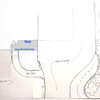question re the 'ivy question.'...
woodyoak zone 5 southern Ont., Canada
11 years ago
Related Stories

EXTERIORSCurb Appeal Feeling a Little Off? Some Questions to Consider
Color, scale, proportion, trim ... 14 things to think about if your exterior is bugging you
Full Story
WORKING WITH PROS12 Questions Your Interior Designer Should Ask You
The best decorators aren’t dictators — and they’re not mind readers either. To understand your tastes, they need this essential info
Full Story
ORGANIZINGPre-Storage Checklist: 10 Questions to Ask Yourself Before You Store
Wait, stop. Do you really need to keep that item you’re about to put into storage?
Full Story
GARDENING GUIDESNo-Regret Plants: 5 Questions Smart Shoppers Ask
Quit wasting money and time at the garden center. This checklist will ensure that the plants you're eyeing will stick around in your yard
Full Story
MOVINGHiring a Home Inspector? Ask These 10 Questions
How to make sure the pro who performs your home inspection is properly qualified and insured, so you can protect your big investment
Full Story
REMODELING GUIDESSurvive Your Home Remodel: 11 Must-Ask Questions
Plan ahead to keep minor hassles from turning into major headaches during an extensive renovation
Full Story
REMODELING GUIDESPlanning a Kitchen Remodel? Start With These 5 Questions
Before you consider aesthetics, make sure your new kitchen will work for your cooking and entertaining style
Full Story
LIGHTING5 Questions to Ask for the Best Room Lighting
Get your overhead, task and accent lighting right for decorative beauty, less eyestrain and a focus exactly where you want
Full Story
DOORS5 Questions to Ask Before Installing a Barn Door
Find out whether that barn door you love is the right solution for your space
Full Story
KITCHEN DESIGN9 Questions to Ask When Planning a Kitchen Pantry
Avoid blunders and get the storage space and layout you need by asking these questions before you begin
Full StoryMore Discussions










duluthinbloomz4
tanowicki
Related Professionals
Tempe Landscape Architects & Landscape Designers · Manchester Landscape Contractors · Cedar Hill Landscape Contractors · Fort Worth Landscape Contractors · Kearny Landscape Contractors · Lake Saint Louis Landscape Contractors · Madera Landscape Contractors · New Berlin Landscape Contractors · Pine Hills Landscape Contractors · Vallejo Landscape Contractors · Winchester Landscape Contractors · Welby Decks, Patios & Outdoor Enclosures · Fort Lee Decks, Patios & Outdoor Enclosures · Fort Worth Decks, Patios & Outdoor Enclosures · Burleson Swimming Pool Buildersinkognito
shaxhome (Frog Rock, Australia 9b)
bahia
bahia
landscapingnm
botann
bahia
Yardvaark
ishcountrygal
bahia
woodyoak zone 5 southern Ont., CanadaOriginal Author
mad_gallica (z5 Eastern NY)
Yardvaark
gardengal48 (PNW Z8/9)
woodyoak zone 5 southern Ont., CanadaOriginal Author
woodyoak zone 5 southern Ont., CanadaOriginal Author
woodyoak zone 5 southern Ont., CanadaOriginal Author
gardengal48 (PNW Z8/9)
woodyoak zone 5 southern Ont., CanadaOriginal Author
inkognito
woodyoak zone 5 southern Ont., CanadaOriginal Author
ishcountrygal
ishcountrygal
Yardvaark
woodyoak zone 5 southern Ont., CanadaOriginal Author
Yardvaark
ishcountrygal
Yardvaark
woodyoak zone 5 southern Ont., CanadaOriginal Author
duluthinbloomz4
ishcountrygal